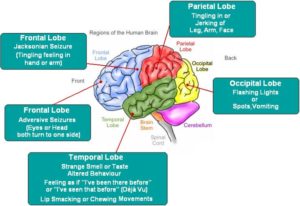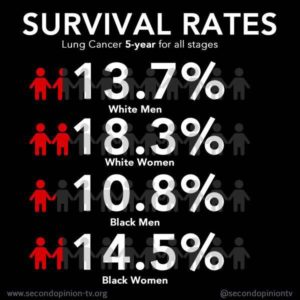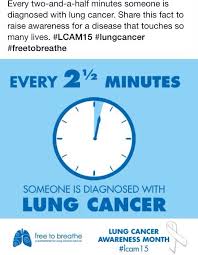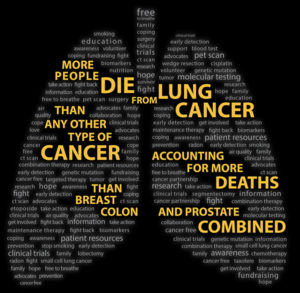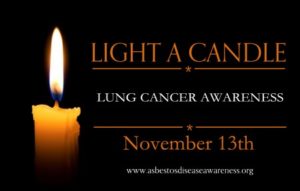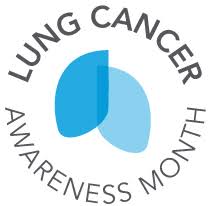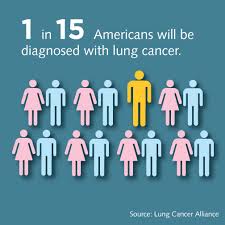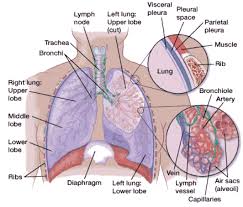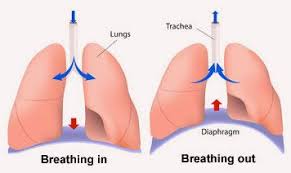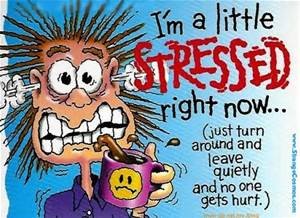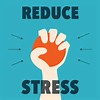Archives
PART I National Epilepsy Awareness Month-Learn what it is & know the facts!
What is epilepsy?
Most people with epilepsy are otherwise healthy; as long as it’s well controlled like most other diseases. A seizure is a physical manifestation of paroxysmal and abnormal electrical firing of neurons in the brain. Think of it as numerous voltage (hyperexcitability of neurons) going throughout the brain meaning brain waves going in all directions with the brain saying its too much activity going through my organ and can’t think normally; instead the brain goes through a shock. In simpler terms the brain is getting too much brain wave excitability for the organ to register in what to do causing the brain to go into a type of a seizure.
When the seizure occurs there is a decrease in oxygen since the brain isn’t capable to send messages during the seizure. The problem it too much electrical stimulation is happening in the brain causing the type of seizure to come on. If the seizure continues to repeat one right after another the person is in status epilepticus and if the seizures do not stop the person can lead to a neuronal death; like John Travolta’s son who died of this for example.
The term seizure disorder may refer to any number of conditions that result in such a paroxysmal electrical discharge. These conditions could be metabolic or structural in nature.
For example, if a metabolic condition this could be “Canavan disease” which is primarily a disease of demyelination. Your myelin sheath that protects and insulates the nerves is being destroyed and can cause a seizure as one of the symptoms.
*Another example being metabolic is thought to be caused by brain acetate deficiency resulting from a defect of N–acetylaspartic acid (NAA) catabolism (meaning breakdown is occurring). Accumulation of NAA, a compound thought to be responsible for maintaining cerebral fluid balance, can lead to cerebral edema and neurological injury, like a seizure as one symptoms of the disease.
*Sometimes there is a known cause and than there is just idiopathic, unknown cause for the epilepsy which if starts in childhood can resolve by the child growing out it, like in petite mal seizures but other times that is not the case and goes into motor/focal or grand mal that is permanent so the individual needs Rx for life.
Remember, not all seizures are due to epilepsy. Other conditions that can look like epilepsy include fainting, or very low blood sugar in some people being treated for diabetes.
Remember, etiology (the cause) of Epilepsy can be generally a sign of underlying pathology involving the brain–knowing the cause. To find this out diagnostic tooling be a neurologist who specializes in epilepsy is the best resource to go to. The epilepsy may be the first sign of a nervous system disease (ex. Brain tumor), or it may be a sign of a systemic or metabolic derangement. Where the treatment may be able to resolve the seizure symptom completely where this wasn’t a seizure disorder or epilepsy but just a symptom due to another disorder that may be 100% cured, like a operable tumor removed surgically from the brain.
Facts and Statistics on Seizures:
- Most seizures happen suddenly without warning, last a short time (a few seconds or minutes) and stop by themselves.
- Seizures can be different for each person.
- Just knowing that someone has epilepsy does not tell you what their epilepsy is like, or what seizures they have.
- Calling seizures ‘major’ or ‘minor’ does not tell you what happens to the person during the seizure. The names of seizures used on this page describe what happens during the seizure.
- Some people have more than one type of seizure, or their seizures may not fit clearly into the types described on this page. But even if someone’s seizures are unique, they usually follow the same pattern each time they happen.
- Not all seizures involve convulsions (jerking or shaking movements). Some people seem vacant, wander around or are confused during a seizure.
- Some people have seizures when they are awake, called ‘awake seizures’. Some people have seizures while they are asleep, called ‘asleep seizures’ (or ‘nocturnal seizures’). The names ‘awake’ and ‘asleep’ do not explain the type of seizures, only when they happen.
- Injuries can happen during seizures, but many people don’t hurt themselves and don’t need to go to hospital or see a doctor.
Check out Part II tomorrow!
QUOTE FOR WEDNESDAY:
“Lung cancer diagnosis often starts with an imaging test to look at the lungs. If you have symptoms that worry you, a healthcare professional might start with an X-ray. If you smoke or used to smoke, you might have an imaging test to look for signs of lung cancer before you develop symptoms. People with an increased risk of lung cancer may consider yearly lung cancer screening using low-dose CT scans. Lung cancer screening is generally offered to people 50 and older who smoked heavily for many years. Screening also is offered to people who have quit smoking in the past 15 years. Discuss your lung cancer risk with your healthcare professional. Together you can decide whether lung cancer screening is right for you. Treatment for lung cancer usually begins with surgery to remove the cancer. If the cancer is very large or has spread to other parts of the body, surgery may not be possible. Treatment might start with medicine and radiation instead. Your healthcare team considers many factors when creating a treatment plan.”
MAYO CLINIC (https://www.mayoclinic.org/diseases-conditions/lung-cancer/diagnosis-treatment/drc-20374627)
Part III Lung Cancer Awareness Month – diagnosing and treatment options for Lung Cancer!
For many people, the first sign that they may have lung cancer is the appearance of a suspicious spot on a chest x-ray or a CT scan. But an image alone is not enough to tell you whether you have cancer and, if so, what type of cancer it is.
Most people who come to us for a lung cancer diagnosis first meet with a surgeon. He or she will work with pathologists, radiologists, and other lung cancer specialists to determine the specific type of lung cancer you have and how advanced it is. These findings help your disease management team develop the most successful treatment plan for you.
The first step is for your doctor to get a tissue sample using one of several biopsy methods. Then a pathologist — a type of doctor who specializes in diagnosing disease —who focuses on lung cancer studies the tissue under a microscope to determine whether you have lung cancer and, if so, what type. He or she will be able to tell this by looking closely at the cancer cells’ shape and other features.
Knowing which type of lung cancer you have will help your doctors to stage the tumor accurately and to begin identifying the best treatment approach. Understanding what type of cancer you have is also important because each type responds differently to certain chemotherapy drugs.
Testing healthy people for lung cancer
Several organizations recommend people with an increased risk of lung cancer consider annual computerized tomography (CT) scans to look for lung cancer. If you’re 55 or older and smoke or used to smoke, talk with your doctor about the benefits and risks of lung cancer screening.
Tests to diagnose lung cancer
If there’s reason to think that you may have lung cancer, your doctor can order a number of tests to look for cancerous cells and to rule out other conditions. In order to diagnose lung cancer, your doctor may recommend:
- Imaging tests. An X-ray image of your lungs may reveal an abnormal mass or nodule. A CT scan can reveal small lesions in your lungs that might not be detected on an X-ray.
- Sputum cytology. If you have a cough and are producing sputum, looking at the sputum under the microscope can sometimes reveal the presence of lung cancer cells.
- Tissue sample (biopsy). A sample of abnormal cells may be removed in a procedure called a biopsy.Your doctor can perform a biopsy in a number of ways, including bronchoscopy, in which your doctor examines abnormal areas of your lungs using a lighted tube that’s passed down your throat and into your lungs; mediastinoscopy, in which an incision is made at the base of your neck and surgical tools are inserted behind your breastbone to take tissue samples from lymph nodes; and needle biopsy, in which your doctor uses X-ray or CT images to guide a needle through your chest wall and into the lung tissue to collect suspicious cells.A biopsy sample may also be taken from lymph nodes or other areas where cancer has spread, such as your liver.
Treatment Options for Lung Cancer Patients
QUOTE FOR MONDAY:
“There are many cancers that affect the lungs, but we usually use the term “lung cancer” for two main kinds: non-small cell lung cancer and small cell lung cancer. Non-small cell lung cancer (NSCLC) is the most common type of lung cancer. It accounts for over 80% of lung cancer cases. Common types include adenocarcinoma and squamous cell carcinoma. Adenosquamous carcinoma and sarcomatoid carcinoma are two less common types of NSCLC. Small cell lung cancer (SCLC) grows more quickly and is harder to treat than NSCLC. It’s often found as a relatively small lung tumor that’s already spread to other parts of your body. Specific types of SCLC include small cell carcinoma (also called oat cell carcinoma) and combined small cell carcinoma. Cancer is usually staged based on the size of the initial tumor, how far or deep into the surrounding tissue it goes, and whether it’s spread to lymph nodes or other organs. Each type of cancer has its own guidelines for staging but ranges from stage 0 to stage 5.”
Cleveland Clinic (https://my.clevelandclinic.org/health/diseases/4375-lung-cancer)
Part II Lung Cancer Awareness Month -Staging of NonSmall and Small Cell Lung Cancer and How Staging Works!
Understanding if and where lung cancer has spread (the stage) is important to determining what options are available for treatment. Imaging tests, biopsies and laboratory tests help to determine staging.
Non-Small Cell Lung Cancer
Non-small cell lung cancer is one of several cancers staged using the TNM system. The cancer is staged according to the size of the tumor (T), the extent to which the cancer has spread to the lymph nodes (N), and the extent to which the cancer has spread beyond the lymph nodes, or metastasis (M).
How Does The TNM Staging System Work?
The TNM staging system:
- Was created by merging the staging systems of the American Joint Committee on Cancer (AJCC) http://www.cancerstaging.org/ and the International Union Against Cancer (UICC) http://www.uicc.org/ in 1987
- Is one of the most commonly used cancer staging systems
- Standardizes cancer staging internationally
T is for Tumor
How big is the tumor? Where is it located? Has it spread to nearby tissue?
| TX | The primary tumor cannot be assessed, or the presence of a tumor was only proven by the finding of cancer cells in sputum or bronchial washings but not seen in imaging tests or bronchoscopy. |
| T0 | No evidence of a primary tumor. |
| Tis | “In situ” – cancer is only in the area where the tumor started and has not spread to nearby tissues. |
| T1 | The tumor is less than 3 cm (just slightly over 1 inch), has not spread to the membranes that surround the lungs (visceral pleura), and does not affect the air tunes (bronchi) that brand out on either side from the windpipe (trachea). |
| T1a | The tumor is less than 2 cm. |
| T1b | The tumor is larger than 2 cm but less than 3 cm. |
| T2 | The tumor is larger than 3 cm but less than 7 cm or involves the main air tubes (bronchus) that brand out from the windpipe (trachea) or the membranes that surround the lungs (visceral pleura). The tumor may partially block the airways but has not caused the entire lung to collapse (atelectasis) or to develop pneumonia). |
| T2a | The tumor is larger than 3 cm but less than or equal to 5 cm. |
| T2b | The tumor is larger than 5 cm but less than or equal to 7 cm. |
| T3 | The tumor is more than 7 cm or touches an area near the lung (such as the chest wall or diaphragm, or sac surrounding the heart (pericardium) or has grown into the main air tubes (bronchus) that brand out from the windpipe (trachea) but not the area where the windpipe divides or has caused one lunch to collapse (atelectasis) or pneumonia in an entire lung or there is a separate tumor(s) in the same lobe. |
| T4 | The tumor is of any size and has spread to the area between the lungs (mediastinum), heart, trachea, esophagus, backbone or the place where the windpipe (trachea) branches or there is a separate tumor(s) in a different lobe of the same lung. |
N is for Lymph Node
Has the cancer spread to the lymph nodes in and around the lungs? For more information on the lymph system and lymph nodes, see Lymph System
| NX | Regional lymph nodes cannot be assessed. |
| N0 | No cancer found in lymph nodes. |
| N1 | Cancer has spread to lymph nodes within the lung or to the area where the air pipes (bronchus) that branch out from the windpipe enter the lung, but only on the same side of the lung as the tumor (ipsilateral). |
| N2 | Cancer has spread to lymph nodes near where the windpipe (trachea) branches into the left and right air tubes (bronchi) or near the area in the center of the lung (mediastinum) but only on the same side of the lung as the tumor. |
| N3 | Cancer has spread to lymph nodes found on the opposite side of the lung as the tumor (contralateral) or lymph nodes in the neck. |
M is for Metastasis
Has the cancer spread to other parts of the body?
| MX | Cancer spread cannot be assessed |
| M0 | Cancer has not spread. |
| M1 | Cancer has spread. |
| M1a | Cancer has spread: separate tumor(s) in a lobe in the opposite lung from the primary tumor (contralateral), or malignant nodules in the membrane that surround the lung (pleura) or malignant excess fluid (effusion) in the pleura or membrane that surround the hear (pericardium). |
| M1b | Cancer has spread to distant part of the body such as brain, kidney, bone. |
Stages
After the Tumor (T), Lymph Nodes (N) and Metastasis (M) have been determined, the cancer is then staged accordingly:
| Overall Stage | T | N | M |
|---|---|---|---|
| Stage 0 | Tis (in situ) | N0 | M0 |
| Stage IA | T1a, b | N0 | M0 |
| Stage IB | T2a | N0 | M0 |
| Stage IIA | T1a, b T2a T2b |
N1 N1 N0 |
M0 M0 M0 |
| Stage IIB | T2b T3 |
N1 N0 |
M0 M0 |
| Stage IIIA | T1, T2 T3 T4 |
N2, N1 N2, N0 N1 |
M0 M0 M0 |
| Stage IIIB | T4 Any T |
N2 N3 |
M0 M0 |
| Stage IV | Any T | Any N | M1a, b |
Small Cell Lung Cancer
Small cell lung cancer is most often staged as either limited-stage or extensive-stage.
Limited-Stage
Indicates that the cancer has not spread beyond one lung and the lymph nodes near that lung.
Extensive-Stage
The cancer is in both lungs or has spread to other areas of the body.
Source:
International Association for the Study of Lung Cancer. Goldstraw P, ed. Staging Handbook in Thoracic Oncology. Orange Park: Editorial Rx Press; 2009.
QUOTE FOR THE WEEKEND:
“LUNG FORCE is uniting people across the country to stand together against lung cancer, the leading cause of cancer deaths in the U.S. Lung cancer happens when cells in the lung change (or mutate). Most often, this is because of exposure to dangerous chemicals that we breathe. But lung cancer can also happen in people with no known exposure to toxic substances. Unlike normal cells, cancer cells grow uncontrollably and cluster together to form a tumor, destroying healthy lung tissue around them. Symptoms usually do not appear until cancer cells spread to other parts of the body and prevent other organs from functioning properly. At this point, it is harder to treat lung cancer. Smoking poses the greatest risk, but there are others such as exposure to radon and air pollution.Screening high-risk individuals has the potential to drama-tically improve lung cancer survival rates. There are multiple types of lung cancer. Knowing this information can help inform treatment options.”
American Lung Association (https://www.lung.org/lung-health-diseases/lung-disease-lookup/lung-cancer/basics)
Part I Lung Cancer Awareness Month
When you breathe in, air enters through your mouth and nose and goes into your lungs through the trachea (windpipe). The trachea divides into tubes called the bronchi (singular, bronchus), which enter the lungs and divide into smaller branches called the bronchioles. At the end of the bronchioles are tiny air sacs known as alveoli.
Many tiny blood vessels run through the alveoli. They absorb oxygen from the inhaled air into your bloodstream and pass carbon dioxide (a waste product from the body) into the alveoli. This is expelled from the body when you exhale. Taking in oxygen and getting rid of carbon dioxide are your lungs’ main functions.
A thin lining called the pleura surrounds the lungs. The pleura protects your lungs and helps them slide back and forth as they expand and contract during breathing. The space inside the chest that contains the lungs is called the pleural space (or pleural cavity).
Below the lungs, a thin, dome-shaped muscle called the diaphragm separates the chest from the abdomen. When you breathe, the diaphragm moves up and down, forcing air in and out of the lungs.
LUNG CANCER
There are 3 types of lungs cancer. The two most common types of lung cancer that exist are 1 non-small cell lung cancer (NSCLC), which is the most common, and 2 small cell lung cancer (SCLC), an aggressive cancer that occurs in just over 10 percent of all lung cancer cases.
The third group is 3 lung carcinoid tumors (also known as lung carcinoids) are a type of lung cancer, which is a cancer that starts in the lungs. Cancer starts when cells begin to grow out of control. Cells in nearly any part of the body can become cancer, and can spread to other areas of the body.
Lung carcinoid tumors are uncommon and tend to grow slower than other types of lung cancers. They are made up of special kinds of cells called neuroendocrine cells.
Lung Cancer Symptoms
Both major types of lung cancer have similar symptoms. These symptoms often include a cough that doesn’t go away and shortness of breath.
Sometimes lung cancer does not cause any signs or symptoms. It may be found during a chest X-ray done for another condition. Signs and symptoms may be caused by lung cancer or by other conditions. Check with your doctor if you have any of the following:
- Chest discomfort or pain
- A cough that doesn’t go away or gets worse over time
- Trouble breathing
- Wheezing
- Blood in sputum (mucus coughed up from the lungs)
- Hoarseness
- Loss of appetite
- Weight loss for no known reason
- Tiredness/lethargy
- Trouble swallowing
- Swelling in the face and/or veins in the neck
For both conditions, early detection through a low-dose computed topography (CT) scan is especially critical. Identifying lung cancer in its earliest stages even before you have symptoms can reduce the risk of death by 20 percent, according to recent studies.
Non-small cell lung Cancer (NSCLC)
Non-small cell lung cancer (NSCLC) is the most common type of cancer in lung tissues. Your risk of developing this disease increases if you are a longtime or former smoker, have been exposed to passive smoke, or have had environmental or occupational exposure to radon, asbestos, uranium, and other substances. The primary types of NSCLC are named for the type of cells found in the cancer:
- Squamous-cell carcinoma (also called epidermoid carcinoma)
- Adenocarcinoma
- Large-cell carcinoma
- Adenosquamous carcinoma
- Undifferentiatiated carcinoma
Small Cell Lung Cancer (SCLC)
In small cell lung cancer (SCLC), small cancerous cells arise in the airway, usually in a central location. This is an aggressive cancer that spreads quickly throughout the body through the blood and lymphatic (node) systems. Typically occurring in people who smoke or who used to smoke, SCLC accounts for just over 10 percent of all lung cancers.
QUOTE FOR FRIDAY:
“November 1st is National Stress Awareness Day.
The holiday season brings joy and celebration. It can also amplify stress levels with the rush of activity and expectations associated. National Stress Awareness Day is well timed at the beginning of November to raise attention to the stress many feel at this time of year. Founded by the International Stress Management Association, National Stress Awareness Day is intended to “increase public awareness and help people recognize, manage, and reduce stress in their personal and professional lives.”
A daily mindful self check-in can help you identify when you are feeling stressed, anxious, or down.
If you are feeling stressed there are practices that can help immediately relieve everyday stressors.”
The George Washington University (https://blogs.gwu.edu/himmelfarb/2023/10/30/november-1st-is-national-stress-awareness-day/)
Do you have stress? Learn tips on how to deal with it!
One way of looking at life is whatever challenges comes your way know you will survive and for any losses you may experience when looking back on them take the positive aspects or memories not the negative that builds a bad effect on you (Ex. Insomnia to depression to high blood pressure to alcoholism to drugs). A positive effect can be as simple as a smile when reflecting memories, which FYI allows less frowning that will cause less wrinkles on the forehead, as we get older. Sometimes it’s not that simply and when it gets harder take up a constructive way of dealing with it (Ex. Work out at your level, walking, singing, go to a comedy movie, get together with friends go out, and do anything that gets your mind off of the stress and even out of your body through work out at the gym to just biking or walking.).
For starters stress is a body reaction to CHANGE. How to you look at change? Easy, positive! It may not appear easy at first but try to look at this change as a sense of difficulty yet a challenge with a victory in the end, if approached right. Let us take the following challenges, for example – Having a child leave home for college or marriage, losing a home with this economy, a loss of a friend in your life: How do you look at these experiences positive?
Well for the child I would be so happy for her or him starting college life with my worries but knowing I raised her or him well and if he makes mistakes on the way he will learn to get up off the ground and fix them knowing he can come to me or dad whenever he has the need or if we sense a problem we would address it (Its part of life=growing up). Another aspect to look at regarding this stress is there is loss in the parent role so fill up that loss with a new hobby, or get active in whatever organization you are in (Ex. Church, Temple, School, to just taking up ceramics or do more traveling with your spouse and friends). I had my falls with the stresses that I have come across but got up every time to stand again, some quicker than other times.
How do you deal with losing a home with this economy well appreciate the good memories you had when you had the home and pick up starting a new life elsewhere with making it a journey down the yellow brick road leading you to where the rainbow is at the end; don’t look at it as a loss.
Dealing with losing a friend, again, the way I look at it is I appreciate the time I had with her or him and know they haven’t left me in spirit (if deceased). If the person is still living know there are reasons for everything; whatever the cause was for the reason for the relationship parting and when out of my control I think of how I had a good friendship as opposed to never having one with that individual. I accept that nothing lasts forever or indefinitely, with appreciating the time I may have had with the person. Ending note is I look at life this way, whatever positive entity comes in my life may be taken away from me and appreciate every moment you spend with that person or thing in your life that you love so much (including my life span that only upstairs knows how long that time factor will be but I try to live a life at its healthiest optimal level with practicing positive behavior which is knowing whatever stressors come my way there is always someone worse off and with God I can face anything.
If I don’t deal with stress like this than I can expect complications that may arise, just like for anyone else who looks at challenges coming their way in a negative sense. You commonly see stress become a negative experience when a person faces continuous challenges/stressors without relief or relaxation between the them. The ending result is the person becomes overworked and stress-related tension builds. Stress that continues without positive resolution at some level can cause a condition called distress, which is a negative stress reaction. The physical reactions that happen to your body due to negative stress:
-Elevated high blood pressure –Headaches –Chest Pain –Upset Stomach –Insomnia –Grinding of the teeth –Jaw Tension –Teeth grinded down –Irritability –Anger –Panic episodes –Vasoconstriction to our vessels causing increases to the heart rate –Decreases sex drive –Depression (Research even suggests that stress also can bring on or worsen certain symptoms or diseases.)
Stress costs American industry more than $300 billion annually.
The lifetime prevalence of an emotional disorder is more than 50%, often due to chronic, untreated stress reactions.
Stress is a normal part of life. Many events that happen to you and around you — and many things that you do yourself (Ex. Work 40 to 60 hrs a week in a highly stressful job, like a policeman) – will put stress on your body. You can experience stress from your environment, your body, and your thoughts. You can also cause the stress to impact your body with first just signs and symptoms (s/s) developing, that are listed above, but without relief of the stress these s/s can lead you into a disease/illness forming or even make the diagnose (s) you already have even worse.
Many signs and symptoms pick up when exposed to continual stress or stresses that just build up on top of each other causing some people in developing unhealthy habits, poor dieting, and the lack of desire to be as active as they were which in turn develops conditions that would not have occurred if this negative behavior didn’t happen over a long period of time.
This behavior with the stress or stresses you are experiencing increases the probability of health conditions starting to take place in your body or if you’re with certain diagnoses already the stress can possibly impact your body by worsening the condition. The conditions that can develop from any age of being under continual stress over a period of time are:
-ADD or ADHD –Panic disorders –High blood pressure –Anti-arrhythmias -Cardiac Disease -Diabetes 1 or Diabetes 2 -Stroke –Irritable Bowel Syndrome –Weight Gain/Obesity –Fibromyalgia –Complex Regional Pain Syndrome –ETOH -Depression and so much more.
How to bypass developing conditions that can be caused from the long constant stress or stresses you experience? One method is fight back (fight or flight), and when it gets really difficult don’t turn to bad heath patterns in your life to deal with the stressors turn to a healthy diet, keeping a healthy weight for your body mass index (BMI) so you can deal better with fighting the stressors in your life (if not sure what your BMI is check online to find out how to calculated it, it is for free), and practice healthy habits. You may be saying how to I even go about that or maybe it’s easy for me but not true. Let me shine some light on this topic. I was there many times before and found a resolution to help deal better with my stresses through a change in eating and I lost 22 lbs. and still I am trying with being physically challenged at this moment to get to my optimal shape. If you want to check out how to deal effectively with your stress and live a healthier life for prevention of complications that stress can cause go to healthyusa.tsfl.com/. You will learn both through Dr. Anderson and his book “Dr. A’s habits of health”. This will help you in dealing with stressors as well as boost up your health with losing weight and learning healthy habits in living. Through Dr. Anderson’s book you will learn about all 4 food groups in how to eat the foods, when to eat the foods, what portion sizes to use, with learning even about diseases and illnesses that can occur through poor habits in diet, activity, and more. If this this news spreads throughout America it would make our country much healthier which we could use for now and in the future. This is not a recruiting organization but a company that can help you and many others live a better and possibly longer life.
Hope I have helped you in someway dealing with any stress in your life. Also, I hope to hear from you both with your comments on the articles you read on my blog with visiting the website in taking the right step to reach the optimal level of your heath including learning methods that help you deal the best you can with stress.

